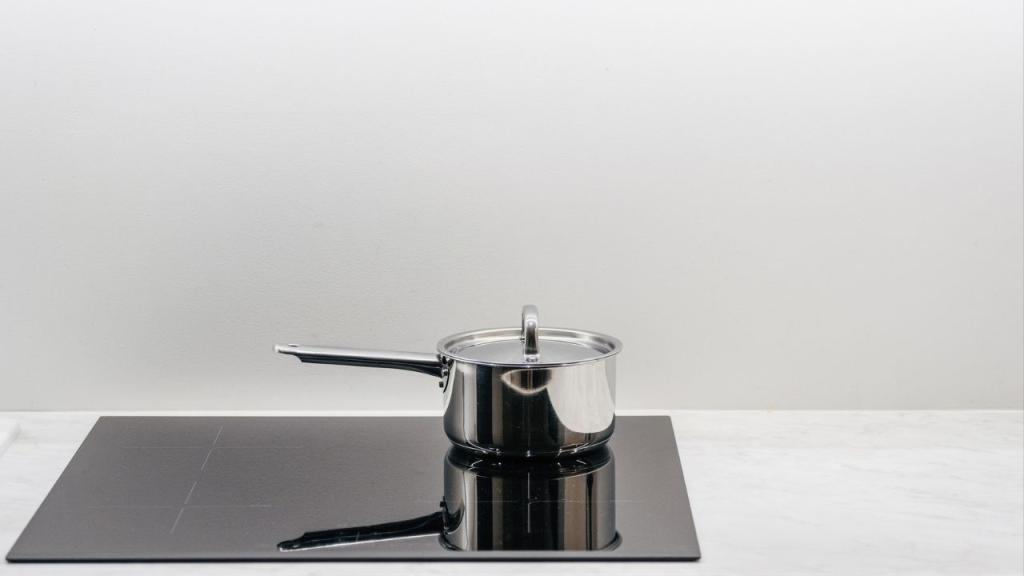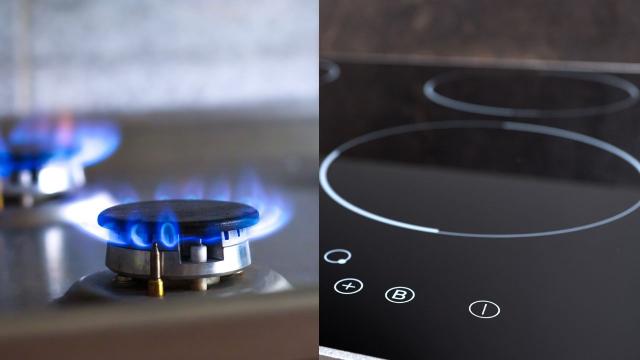Earlier this year, the Victorian government implemented its plan to ban gas connections for new residences in an effort to curb the state’s greenhouse gas emissions. This means new builds will be forced to use electric methods of heating and cooking instead. But even if you’re not impacted by this new policy, there are some compelling reasons to switch to an electric option, such as induction. Lifehacker Australia spoke to a product expert at Winning Appliances to gain an understanding of some of the pros and cons of induction cooktops and how they compare to gas ones.
Induction vs gas cooktops compared
Energy Efficiency:
Karl Mellington, Product Expert at Winning Appliances, explained to us that induction cooktops are generally more energy-efficient due to their method of heating.
“Induction cooktops directly heat the pan rather than heating the surface of the cooktop first, resulting in less time needed for heating and comparatively lower energy consumption,” he said via email.
Naturally, this also tends to mean the costs of running an induction cooktop are lower. Research analysis provided to Guardian Australia also found that new all-electric homes would have 16 per cent lower emissions than dual-fuel homes, so it’s something well worth considering for those conscious of their carbon footprint.
Mellington also pointed out that the flat surface provided by an induction cooktop also acts as a convenient surface for storage or for working during meal preparation.
Cooking:
When it comes to the cooking reliability of an induction cooktop, Mellington said they are “fantastic at heating quickly and at maintaining precise temperatures,” adding that people often require a double boiler to ensure things don’t overheat or burn on a gas stove, whereas that is not needed on an induction one where the heating is more regulated.
Induction stove tops also have significantly less cooldown time than gas, and many can automatically switch to lower temperatures when they recognise that a pot or pan is not sitting on top.
Maintenance:
One of the many fiddly issues with owning a gas stove top is the cleaning. Food scraps often fall between the gaps of the stove supports, which usually requires you to lift and remove the grates entirely to get a thorough cleaning – another thing that is difficult to do after cooking because it’s still so hot.
Cleaning an induction cooktop is much simpler. Mellington said all you need to do is use a soft microfibre cloth to wipe down the stovetop after each use.
Health:
Much has also been written about the detrimental health effects of gas cooking. As CHOICE explains, gas cooktops add additional pollutants to the air, many of which are harmful, such as nitrogen dioxide and formaldehyde, which can be breathed in and absorbed into the bloodstream.
While cooking food on any heating surface will lead to pollutants in the air, an electric cooktop eliminates the additional harm that comes from gas in the home.
If you are concerned about the byproducts of gas cooking but don’t have the means to switch to electric, you can mitigate these effects in a few different ways.
What to consider before switching to electric

As you can see, there are more than a few benefits to induction cooking. However, if you’re considering making the switch in your home, there are some things Mellington recommends you consider first, such as:
- Power supply: Induction cooktops usually require a dedicated electrical circuit with sufficient power. If your kitchen does not have the necessary infrastructure, consider upgrading your electrical system. In some rural areas or apartments, this may not be possible as you may be running on gas bottles or not have approval from your body corporate.
- Cooking style: Some cooking styles may be better suited to gas – for instance, Asian-styled wok cooking due to the shape and nature of the cookware
- Size and style: Ensure that the size of your cooktop fits your kitchen layout and meets your cooking needs
- Cookware compatibility: Before considering the switch to induction, it is best to check that your cookware is compatible – look for the “induction-ready” symbol to confirm this. Most new cookware should be compatible.
Mellington also put forward some product recommendations for those wondering where to start with induction cooking:
- V-ZUG 70cm V6000 Fullflex Induction Cooktop with Teppanyaki Plate
- SIEMENS IQ700 Induction Cooktop EX675LYC1E
- BORA 83cm x Pure Induction Cooktop with Externally Ducted Integrated Ventilation System
- WOLF 91cm Induction Cooktop ICBCI365CB
- Bosch Series 6 60cm Induction Cooktop PVS675FB5E
- Electrolux 90cm Induction Cooktop EHI955BE
- ASKO Induction Cooktops – Celsius Range (available March 2024)
If you want to read more about switching to an all-electric home, you can find additional information here.
Lead Image Credit: iStock

Leave a Reply
You must be logged in to post a comment.